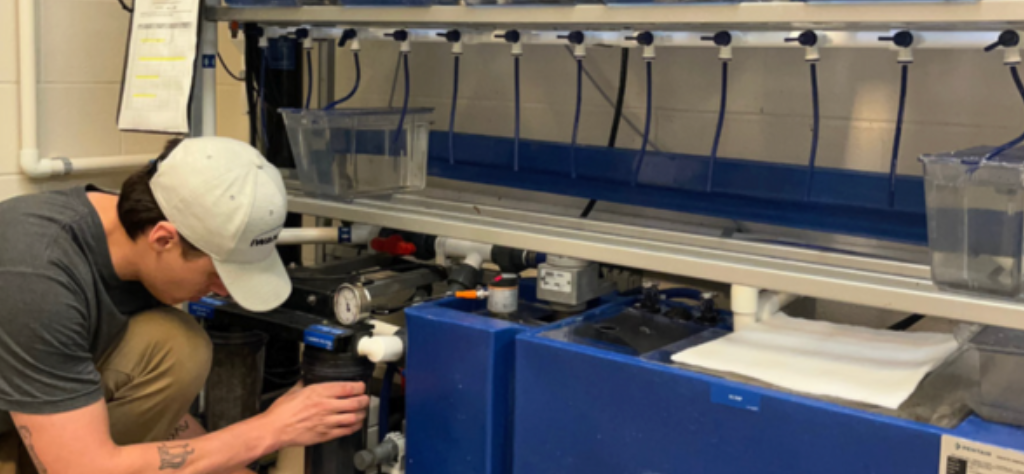The Role of Aquatic System Maintenance in Ensuring a Stable Zebrafish Environment

One of the most widely used model organisms in science nowadays is the zebrafish (Danio rerio), especially in studies pertaining to toxicology, developmental biology, and genetics. They are ideal for a wide range of experimental applications due to their transparent embryos, quick reproductive cycle, and genetic resemblance to humans. Nonetheless, preserving a steady zebrafish environment is essential to guaranteeing accurate study results.
The foundation of zebrafish husbandry is a well-kept aquatic system, which guarantees optimum health, successful reproduction, and consistency in experiments. Research integrity can be jeopardized by poor aquatic system maintenance, which can result in disease outbreaks, poor water quality, and higher mortality.
Understanding Zebrafish Habitat Requirements
Understanding the natural habitat of zebrafish is crucial before delving into the specifics of maintaining aquatic systems. Zebrafish, which are indigenous to South Asian freshwater rivers and floodplains, prefer fairly warm, neutral to slightly alkaline waters with a moderate flow rate. It is essential to their health to replicate these conditions in an aquarium at home or in a lab.
Ideal Water Parameters:
- Temperature: 26–28°C (78–82°F)
- pH: 6.8–7.5
- Ammonia (NH3/NH4+): 0 ppm
- Nitrite (NO2-): 0 ppm
- Nitrate (NO3-): < 50 ppm
- Hardness: 50–150 ppm (moderate hardness)
- Dissolved Oxygen: > 6 mg/L
- Salinity: Freshwater (< 0.5 ppt)
Zebrafish are able to grow, reproduce, and behave naturally by keeping these parameters in check.
The Importance of Aquarium System Maintenance
Maintaining an aquarium system is crucial to keeping zebrafish healthy and avoiding stress, illness, and death. A stable environment is achieved in part by limiting microbial contamination, maintaining ideal water quality, and making sure that filtration is done correctly.
a) The Prevention of Water Quality Problems
Water chemistry changes can have a significant impact on zebrafish. It can be fatal to accumulate toxins such as ammonia and nitrites, which damage the gills and interfere with metabolic processes. An aquatic environment that is stable and healthy is ensured by routine water parameter monitoring and maintenance.
b) Strengthening Consistency in Research
To ensure experiment reproducibility in lab settings, controlled environmental conditions must be maintained. Temperature or water chemistry variations can produce contradictory findings that influence scientific conclusions.
c) Promoting the Longevity and Health of Fish
Well-maintained zebrafish live longer, reproduce more effectively, and have fewer health problems. Conversely, poorly maintained systems can result in immunosuppression, heightened disease susceptibility, and reduced breeding success.
Components of an Effective Aquatic System
Each component of a well-designed zebrafish aquatic system needs to be maintained on a regular basis. These consist of temperature control, lighting, water circulation, and filtration systems.
a) Filtration System
The foundation of a well-kept aquarium is a strong filtration system. By removing waste, surplus nutrients, and toxins from the water, filtration contributes to a stable and clean environment.
Types of Filtrations Used in Zebrafish Systems:
- Mechanical Filtration – This method removes solid waste, such as leftover food and fish waste.
- Biological Filtration – This process converts ammonia and nitrites into less hazardous nitrates by using helpful bacteria.
- Chemical Filtration – This method eliminates dissolved pollutants and toxins by using activated carbon or other media.
- UV Sterilization- This method helps to reduce the number of potentially harmful pathogens in the system by using high-intensity UV light to sterilize harmful bacteria and viruses.
b) Water Circulation and Aeration
Zebrafish require well-oxygenated water to thrive. Proper water circulation helps distribute oxygen evenly, preventing stagnation and promoting the breakdown of waste materials.
Maintenance Tips:
- Regularly check water pumps for blockages.
- Ensure proper aeration by checking the air stones located in the biological filtration chamber or culture tank.
- Maintain adequate flow rates to prevent dead zones in the system.
c) Temperature Control
Maintaining a stable temperature is critical, as fluctuations can stress zebrafish and impact their metabolic rate. Heaters, thermostats, and cooling systems should be used to regulate water temperature.
Maintenance Tips:
- Calibrate or confidence check system temperature elements regularly. .
- Spread water changes out throughout the day in smaller volumes to avoid temperature fluctuations of incoming water.
- Try to match the room temperature within 2C of the desired water temperature whenever possible.
d) Lighting and Photoperiod Regulation
Zebrafish require a consistent light-dark cycle (usually 14 hours of light and 10 hours of darkness) to regulate their circadian rhythm and reproductive cycles.
Maintenance Tips:
- Use programmable LED lighting systems for consistency.
- Avoid excessive lighting, as it can promote algae growth.
- Clean light fixtures regularly to ensure adequate illumination.
Best Practices for Aquarium System Maintenance
To keep a zebrafish system in optimal condition, a structured maintenance routine must be followed. Below are key practices that should be integrated into a regular maintenance schedule.
a) Routine Water Testing
Regular testing of water parameters ensures that any imbalances or toxins are identified and corrected promptly. Most Iwaki systems monitor these parameters continuously and automatically, but it is recommended to independently verify the accuracy of the readings frequently.
Recommended Testing Frequency:
- Daily: Temperature, pH, conductivity (or salinity), dissolved oxygen.
- Weekly: Ammonia, nitrite, nitrate.
- Monthly: Hardness, .
b) Partial Water Changes
Performing routine partial water changes helps maintain water quality by diluting accumulated toxins and replenishing essential minerals.
Best Practices for Water Changes:
- Replace 10-20% of system water daily.
- Use dechlorinated or conditioned water.
- Match the temperature and pH of new water to the existing tank conditions whenever possible.
- Use siphon systems to remove debris from the substrate.
c) Cleaning and Maintenance of Equipment
Filtration systems, heaters, and aeration devices require regular cleaning to prevent malfunctions.
Cleaning Schedule:
- Filters: Clean mechanical filters every 2 weeks; replace chemical media monthly.
- UV Sterilizer: Clean sleeve every 6 months and replace lamp yearly.
- Heaters & Thermometers: Inspect monthly for accuracy.
- Air Stones & Tubing: Replace or clean every few months to prevent clogging.
- Water Quality Sensors: Clean and calibrate every 2 weeks. Replace pH electrodes yearly.
d) Preventing Algae Growth
Excessive algae can deplete oxygen and create unstable water conditions.
Algae Prevention Tips:
- Control lighting duration.
- Reduce excess nutrients by avoiding overfeeding.
- Cover solution tanks and reservoirs with opaque coverings.
e) Disease Prevention & Quarantine Protocols
Zebrafish are prone to bacterial, fungal, and parasitic infections. Implementing quarantine protocols for new fish and maintaining sterile environments can help prevent outbreaks.
Preventive Measures:
- Quarantine new fish for at least two weeks before introducing them to the main tank.
- If practical, breed quarantine fish and only introduce their offspring to your main colony after bleaching the embryos.
- Observe fish daily for signs of disease (e.g., lethargy, loss of appetite, abnormal swimming).
- Avoid overcrowding, as it increases stress and disease susceptibility.
- Isolate sick animals immediately after noticing signs of stress or an infection.
Common Challenges in Aquatic System Maintenance
Even with a well-established maintenance routine, challenges can arise in zebrafish systems. Below are some common issues and solutions.
a) Ammonia Spikes
Cause: Overfeeding, insufficient biological filtration, overstocking.
Solution: Reduce feeding, increase water changes, enhance biological filtration.
b) Cloudy Water
Cause: Bacterial bloom, excess organic waste.
Solution: Improve filtration, reduce organic matter, perform partial water changes.
c) Poor Zebrafish Reproduction
Cause: Inadequate water quality, poor diet, inappropriate light cycles.
Solution: Optimize water conditions, feed a high-quality diet, maintain consistent lighting schedules.
d) Equipment Malfunctions
Cause: Clogged filters, heater failures, pump breakdowns.
Solution: Conduct routine equipment checks, replace worn-out parts, keep stockpile of critical spare supplies on hand.
Conclusion
Whether in home aquariums or research labs, maintaining an aquatic system properly is essential to providing zebrafish with a stable and healthy habitat. Zebrafish productivity and well-being can be maximized by aquarists and researchers through regular water testing, water changes, filtration system maintenance, and fish health monitoring. The longevity and health of the fish as well as the validity of scientific studies are both enhanced by a well-maintained zebrafish system. Maintaining an aquarium system properly takes time and effort, but the rewards are consistent water quality, healthy fish, and repeatable study findings.



